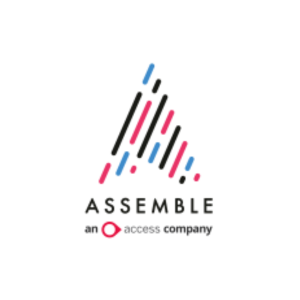Insights
INSIGHTS
All Topics
How to stop quiet quitting in its tracks
25 Nov 2022by Christine Chiu
Don’t let quiet quitting creep up on you – know what it is and how to stop it
Quiet quitting is on the front pages as one of the main symptoms of employee unhappiness. However, what’s sinister, and different from other forms of dissatisfaction, is that it reduces productivity. There’s also a lag before management detects the trend. To dissect what’s going on, we look at quiet quitting and how charity managers can side-step the problem.
What’s quiet quitting?
According to those on social media, quiet quitting is described as: “You’re still performing your duties, but you’re no longer subscribing to the hustle culture mentality that work has to be your life.” Twitter user zkchillin’s thoughts have gone viral, with newspapers quoting his now suspended account.
The Harvard Business Review offers a useful definition. They say: “Quiet quitters continue to fulfil their primary responsibilities, but they’re less willing to engage in activities known as citizenship behaviours: no more staying late, showing up early, or attending non-mandatory meetings.”
To summarise, quiet quitting happens with workers disengage to become less productive. They only do the bare minimum to get by. What makes it hard to notice is that it’s not considered underperforming.
What does it look like at work?
The insidious part here is that unhappy employees stop trying to achieve. The Evening Standard gives a good example. They explain the phenomena as when staff dodge extracurricular tasks or purposely delay things.
They note a fictional character Harry, who’s boss sends him an urgent job at 16:45. Harry knows the work will take him beyond his 17:00 end-of-day. He then sends an email saying he will deal with it the next day. He logs off and is not contactable. Harry knows his behaviour is something he wouldn’t have done previously.
Diving a bit deeper, quiet quitting is about reclaiming work-life balance. It’s achieved by doing the minimum without outright quitting. The root cause of this behaviour includes lack of career growth, poor compensation, job dissatisfaction and disengagement from the cause, observes People Management Magazine.
Tackling the root cause
Charities are in a unique position to shore up strength. “Today, we’re living in a mission-driven era; one in which people are seeking a greater sense of purpose in their lives, and that includes work,” says HR Magazine.
“People want to feel good and personally connected to what they do; and more than ever, they want to see that their contributions make an impact.”
For charities, addressing the problem is simpler than for other sectors. There is inherent good in charity missions, and managers can send that message out both digitally and in-person.
Recognise hard work
Two strategies surrounding combatting quiet quitting are increasing recognition and boosting engagement. Reminding staff why they are present is also a widely accepted means of mitigation.
Increasing recognition online is successful with the help of digital programs. Workstars, a UK-based software company, offers a digital platform for engagement. Accumulating recognition leads to real rewards.
The software-as-a-service integrates with existing channels – including Slack, Teams, and Salesforce. The great thing about digital is that people are appreciated across all locations on the same platform.
Remind staff why they are here
Switch things up for your staff and remind them why they are on the job. In addition to low prospects and poor work-life balance, quiet quitting emerges because of the lack of motivation and repetition.
Encourage staff to re-engage in the mission. Strategies that combat compassion fatigue make sense here. Let them trial a role in another team to see how their job matters. Ask them to thank volunteers, work with beneficiaries, get feedback, or take the time to make new connections.
Social media is a good option. Those in quiet quitting mode might find a spur of creativity using Canva or gain a new appreciation for comments made about the charity mission.
Tools for motivation
Last, productivity tools stops quiet quitting in its tracks. Project management tools are very good at highlighting achievements. Trello’s platform lets task owners track issues from inception to completion.
For those needing an extra boost the ‘done’ tabs show users the entirety of tasks complete. Similar to Trello, Asana and Monday offer tracking to gauge productivity.
Time trackers also work well. Simple timekeepers log time spent doing things, whereas others offer complex tracking. PomoDone helps users set 25mins for deep working and 5mins for break. The timer is linked to other apps like Trello, Asana, Basecamp and Jira.
Alternatively, Hubstaff is an entire platform for tracking hours. Tasks are set out in a list and staff simply start the clock when they work. Hubstaff tracks other types of support for consultants, freelance workers, and those on timed hours.
Christine Chiu
More on this topic
Recommended Products
19 Dec 2024by Christine Chiu
How to recruit digital volunteers
10 Dec 2024by Laura Stanley
How to revisit your charity’s storySponsored Article
06 Dec 2024by Ioan Marc Jones
How charities stopped centring service users
Our Events
Charity Digital Academy
Our courses aim, in just three hours, to enhance soft skills and hard skills, boost your knowledge of finance and artificial intelligence, and supercharge your digital capabilities. Check out some of the incredible options by clicking here.




















